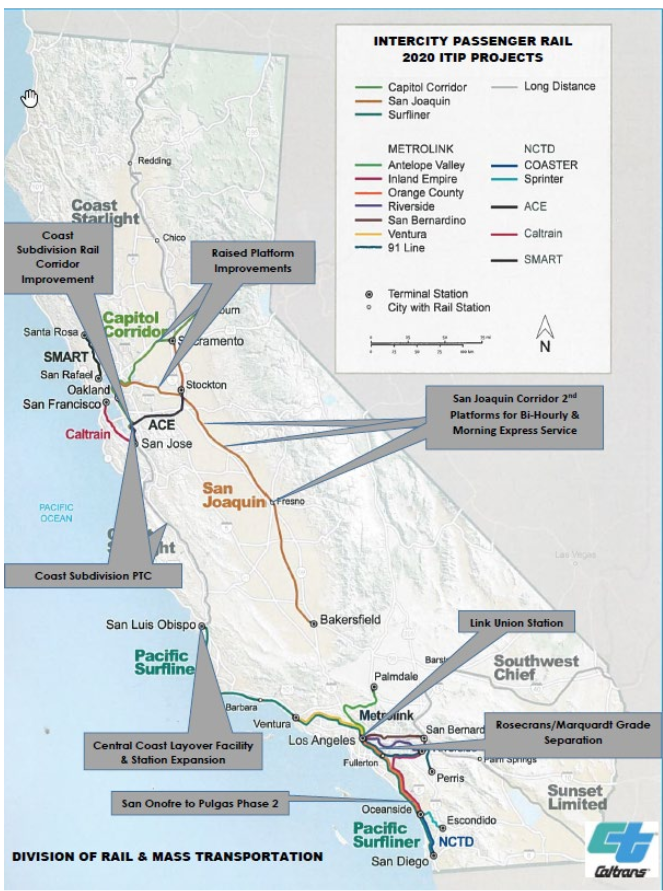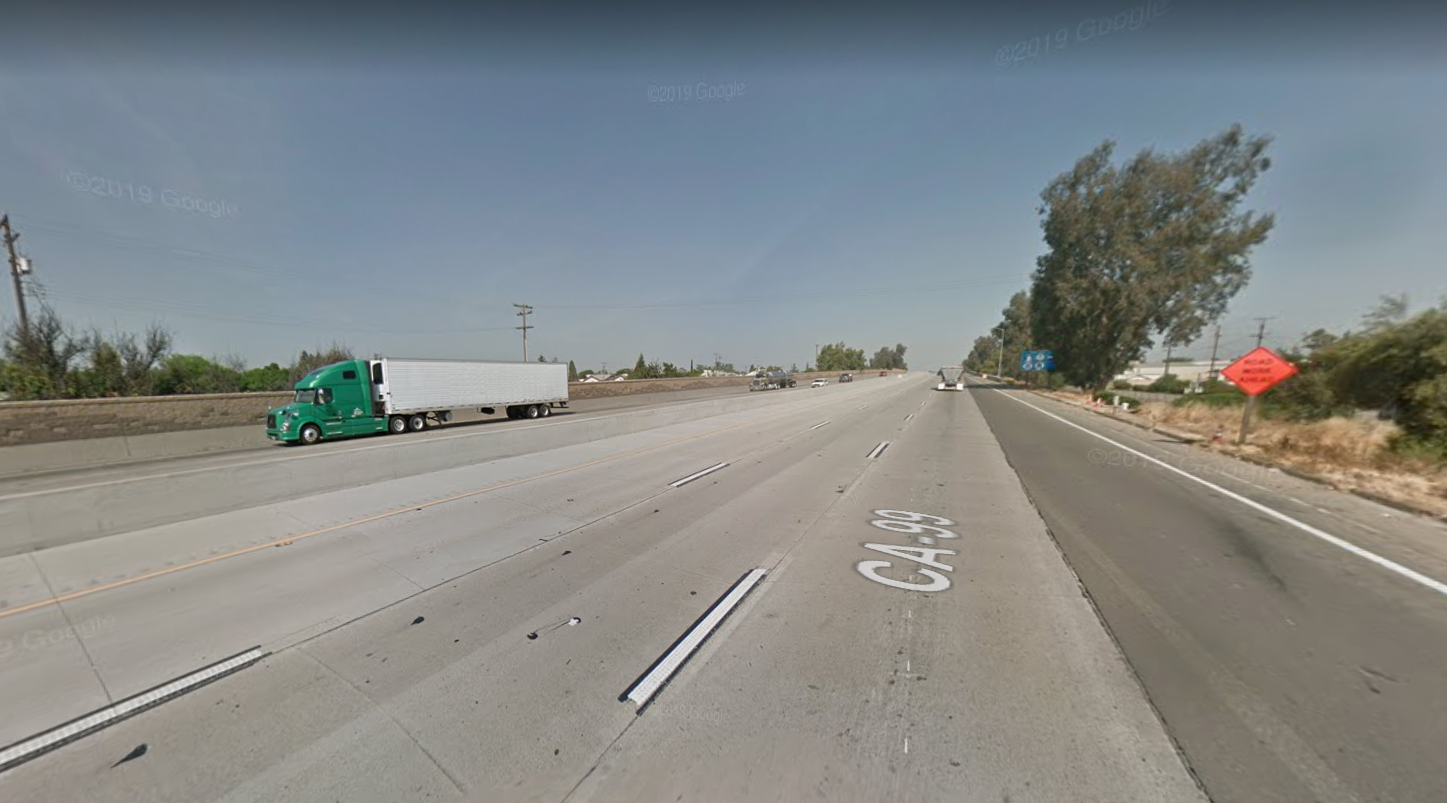Two weeks ago, CBS47 lobbed the following headline: Gov. Newsom redirects gas tax money to fund railway systems, not highways.
Unfortunately, the reporting was pretty light on details. Where is the money going? Where did the money even come from? CBS got the following statement from Caltrans:
The state is confronting the climate crisis head on. In doing so, Caltrans will use available transportation dollars to prioritize projects that manage congestion and reduce vehicle miles traveled in order to curb greenhouse gas emissions. Those who claim the state is canceling projects funded by gas tax dollars are incorrect. Aligning climate goals with transportation goals requires new thinking, not obstructionism.
Fair enough, but that’s not an answer either.
The media also got quotes from a few very angry republicans who essentially said the Governor was stealing from the gas tax fund and the tax was a bait and switch.
“I don’t understand how this is even legal, from a voter integrity standpoint,” (State Sen. Andreas Borgeas, R-Fresno) said Friday during the “Eggs & Issues” forum at Tornino’s in Fresno. “The idea that individuals can take money from that pot (when) the voters prescribed exactly where it was intended to go, from a legal standpoint, I don’t understand.”
Fresno Bee
State Sen. Andreas Borgeas should know better.
Gas Tax Law
Those bait-and-switch claims are a lie. To start, SB-1, the gas tax bill, clearly states how the money gets allocated. For example:
This bill would create the Road Maintenance and Rehabilitation Program to address deferred maintenance on the state highway system and the local street and road system. The bill would require the California Transportation Commission to adopt performance criteria, consistent with a specified asset management plan, to ensure efficient use of certain funds available for the program.
…
The bill would also allocate portions of the revenue from the new transportation improvement fee to the State Transit Assistance Program and to the Transit and Intercity Rail Capital Program. The bill would restrict expenditures of the fee revenues made available to the State Transit Assistance Program to transit capital purposes and certain transit services, and would require a recipient transit agency to comply with various requirements, as specified.
So to start, the bill was never about just roads, and it clearly said as much on the ballot. There’s a lot more in the law about who gets what money, including money for things like planning. In fact, the law even pre-allocated funding based on revenue estimates:
The revenues estimated to be available for allocation under the act to the state are estimated over the next 10 years to be as follows:(A) Fifteen billion dollars ($15,000,000,000) for state highway maintenance and rehabilitation.(B) Four billion dollars ($4,000,000,000) for highway bridge and culvert maintenance and rehabilitation.(C) Three billion dollars ($3,000,000,000) for high priority freight corridors.(D) Two billion five hundred million dollars ($2,500,000,000) for congested corridor relief.(E) Eight hundred million dollars ($800,000,000) for parks programs, off-highway vehicle programs, boating programs, and agricultural programs.(F) Two hundred seventy-five million dollars ($275,000,000) for the interregional share of the State Transportation Improvement Program.(G) Two hundred fifty million dollars ($250,000,000) for freeway service patrols.(H) Seventy million dollars ($70,000,000) for transportation research at the University of California and the California State University.
I highlighted F, because this is the specific section of money we are talking about today. Section A, the $15,000,000,000 for state highway maintenance and rehabilitation? No change. Section B, the $4,000,000,000 for highway bridge and culvert maintenance and rehabilitation? No change. Etc.
Interregional Transportation Improvement Program
What exactly is the Interregional Transportation Improvement Program ?
The purpose of the Interregional Transportation Improvement Program (ITIP) is to improve interregional mobility for people and goods across the State of California on highway and passenger rail corridors of strategic importance. These strategic corridors provide the transportation network that connects the state’s major regions to one another and connects the rural regions to the large urban areas. The corridors also provide connectivity to neighboring states and the international border with Mexico. The ITIP is a program of projects funded through the State Transportation Improvement Program (STIP) that obtains funding primarily through the per-gallon State tax on gasoline
The ITIP is one of many state funding programs that collectively invest in the development, maintenance, and operations of the State Highway System and other components of the state’s larger transportation network. These programs cover a wide breadth of areas including high-speed rail, intercity passenger rail, commuter and urban rail, bus transit, waterborne ferry, active transportation, highways, local streets and roads, and general aviation airports.
That’s a pretty broad program, which again is about all forms of transportation, and not just highways. As it turns out, the the law is even more specific about the funding mix:
At least 60 percent of the program shall be programmed to projects outside urbanized areas on the Interregional Road System (IRRS) and for intercity passenger rail. Of this amount, at least 15 percent (9 percent of the ITIP) must be programmed for intercity passenger rail projects.
Up to 40 percent may be programmed to projects anywhere in the State subject to the north/south 40/60 split. Projects may be state highway, mass transit fixed guide-way s, or rail grade separation
On top of all this, projects funded under this program must meet certain goals, such as accessibility, safety, and reliability.
This is not a new program, and it’s something you would expect people like Assemblyman Jim Patterson and State Sen. Andreas Borgeas to know about, before saying stupid things like “When you pay for gas and you pay a gas tax, a railroad is not a highway. This is bait and switch. This is saying one thing and doing something else.”
Are they grossly ignorant about the job they are being paid to do by taxpayers, or are they lying?
Changes in Funding
Ok, but what projects exactly are being funded now? High Speed Rail? BART? The proposed Visalia-Hanford rail line? The answer is…nothing!?!
The story unfolds in this massive Caltrans report. This is a draft report, as there are two scheduled public meetings where comments are accepted, but little will change. What this report does is look at how much money is actually available (in case revenue was not projected properly, or costs were higher than expected) and allocate it to specific projects. What projects get money will vary based on current needs, the pre-assigned mix of funds, and executive orders like this one:
Governor Edmond G. Brown issued Executive Order B-30- 15 on April 29, 2015, related to climate change and ordering that a new interim statewide greenhouse gas emission reduction target to reduce greenhouse gas emissions to 40 percent below 1990 levels by 2030 is established.
To start, there’s less money available.
STIP capacity over the 2020 five-year FE period has decreased compared to the capacity in the 2018 five-year FE period, going from $3.3 billion in the 2018 FE to $2.6 billion in the 2020 FE. The decrease is primarily attributable to a high level of pre-existing STIP project commitments for allocated and programmed projects.
And then taking into account the money that has already been planned for, we get this:
The 2020 Fund Estimate provides $52,414,000 in new, additional ITIP funding
But here’s the thing. $52,250,000 is immediately eaten up by previous projects that cost more than expected (in San Luis Obispo and Humboldt counties).
Which by my math, leaves $164,000 to hand out. That’s nothing.
Then, $32,494,00 in highway projects were deleted to make money available. This is where funding for the new CA-99 lanes in Tulare and Madera were cut. The other cut highway was 46 in San Luis Obispo.
By the way, the elected representative of that area has appealed directly to the project benefits, rather than throwing a fit like the Fresno area reps.
Assemblyman Jordan Cunningham, R-San Luis Obispo, called on the California Transportation Commission to reject its staff’s proposal. “The widening of Highway 46 provides not only carries an economic benefit, but a safety one, as well,” Cunningham wrote in his letter. “The Highway 41/46 corridor in San Luis Obispo County, otherwise known as Blood Alley, has seen a fatality rate three times higher than the state average.”
Fresno Bee
Of course, he forgets to mention that so little money is left because one of their projects went over budget….
An additional $8,673,000 was added to the funding pile from money saved on the “Tulare SR 99 Tagus Highway project,” and another $20m from savings from a CA 99 bond.
The end result is “retained $61,331,000 in uncommitted 2020 ITIP programming capacity to be held in reserve for priority rail projects and other priorities aligned with Executive Order N-19-19.”
Priority Rail Projects
Who gets money from these changes is decided based on the executive order, which states that transportation investments must be “near housing, and on managing congestion through innovative strategies that encourage alternatives to driving.”
But what specific projects will get it are not in the report, which is why they’re called uncommitted funds. We DO know what rail projects had previously been allocated funds, which you can see in this map:

It’s a mix of projects around the state, with the primary focus being on Amtrak California lines. Incidentally, this is the first I’ve heard of Fresno getting a second platform at the Amtrak station. That money is not scheduled to be spent until 2022. Maybe they can build high platforms to accommodate the new trains? Currently, the only plan is for “mini-highs” at each station (also in 2022).
The only brand new rail project identified is Link Union Station, which is being funded at the expense of “Raymer to Bernson Double Track Project” which was zeroed out because apparently the engineering was too hard. So that’s money shifted from one part of the Pacific Surfliner to another.
Who should get the uncommitted funds? Well, a lot of hands are out for the cash. Metrolink is apparently arguing that any funds going to them will have the biggest impact on reducing emissions, since they will be able to add more train trips that replace car trips. By electrifying and adding tracks, they can become a serious commuting option for the region. They make a solid argument.
Meanwhile, Central Valley (CV) politicians will argue that the money should stay in the valley, since that’s where it was originally going to go.
That’s a fair argument, but unfortunately, the CV doesn’t have a large bench of projects sitting in line waiting for funds. They want to relocate the Madera station (again), but that project isn’t going to really change travel patterns. ACE, in the northern part of the valley, is very well positioned to receive funding, but that won’t satisfy politicians from Fresno and Kern.
Maybe Fresno-area politicians shouldn’t have put all their eggs in a single 99 shaped basket?
On this blog, my posts and those left by other commentators have complained that much of the CV rail planning focus has been on Sacramento. Well, that shows to me that those folks have their act together. They’ve been working on those plans for years, and are now harvesting the rewards. So I do expect them to get some of these funds.
I think it’s time to ask our politicians why they’ve dropped the ball on planning. Instead of throwing a fit filled with lies, maybe longtime politicians like Jim Patterson and Andreas Borgeas should learn a little about the state transportation programs and work within them.
It’s 2019, the state is on fire, again. Maybe think about transit for once?






